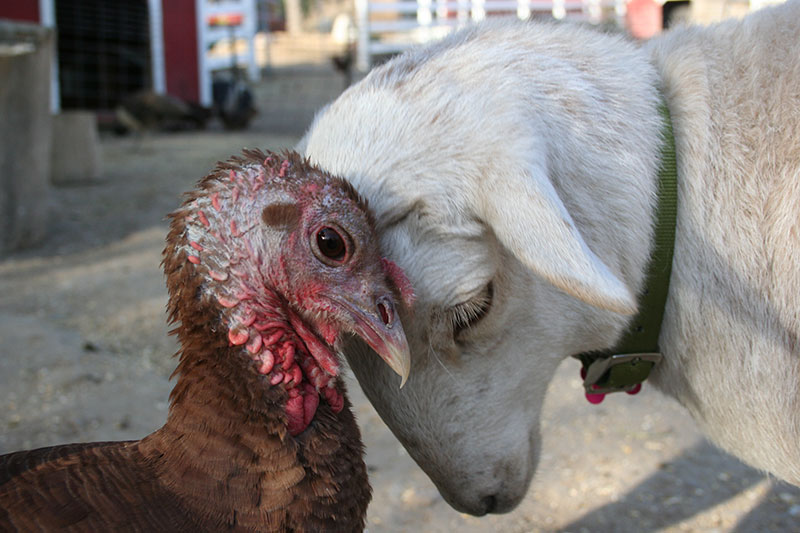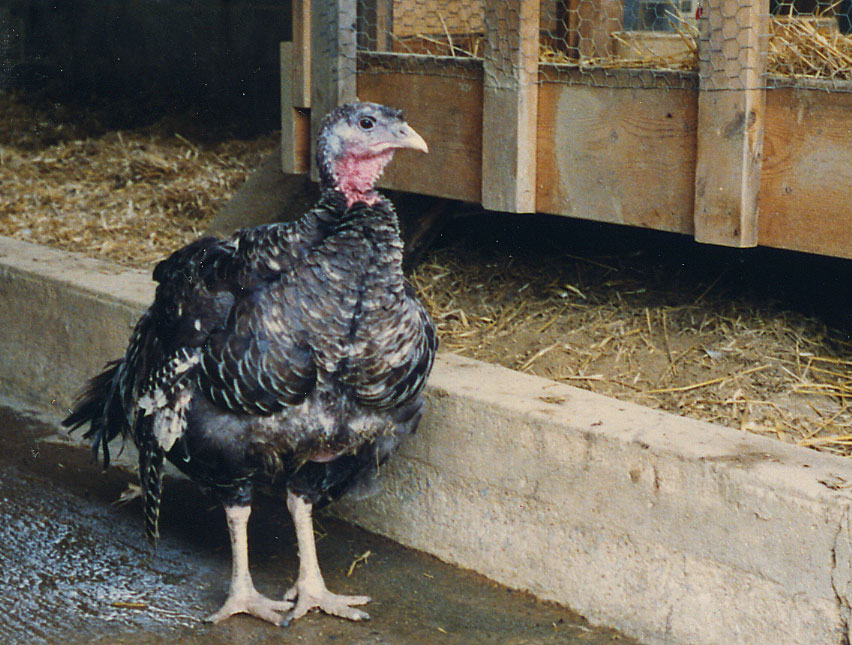By Jonathan Safran Foer, from his book Eating Animals:
"Perhaps the turkey is there because it is fundamental to the ritual -- it is how we celebrate Thanksgiving. Why? Because Pilgrims might have eaten it at their first Thanksgiving? It's more likely that they didn't. We know that they didn't have corn, apples, potatoes, or cranberries...
But let's just make believe that the Pilgrims invented Thanksgiving and were eating turkey. Putting aside the obvious fact that the Pilgrims did many things that we wouldn't want to do now (and that we want to do many things they didn't), the turkeys we eat have about as much in common with the turkeys the Pilgrims might have eaten as does the ever-punch-lined tofurkey. At the center of our Thanksgiving tables is an animal that never breathed fresh air or saw the sky until it was packed away for slaughter. At the end of our forks is an animal incapable of reproducing sexually. In our bellies is an animal with antibiotics in its belly. The very genetics of our birds are radically different. If the Pilgrims could have seen into the future, what would they have thought of the turkey on our table? Without exaggeration, it's unlikely that they would have recognized it as a turkey.
And what would happen if there were no turkey? Would the tradition be broken, or injured, if instead of a bird we simply had the sweet potato casserole, homemade rolls, green beans with almonds, cranberry concoctions, yams, mashed potatoes, pumpkin and pecan pies? It's not so hard to imagine it. See your loved ones around the table. Hear the sounds, smell the smells. There is no turkey. Is the holiday undermined? Is Thanksgiving no longer Thanksgiving?
Or would Thanksgiving be enhanced? Would the choice not to eat turkey be a more active way or celebrating how thankful we feel? Would the joy be lessened by the hunger to eat that particular animal? Imagine your family's Thanksgivings after you are gone, when the question is no longer "Why don't we eat this?" but the more obvious one: "Why did they ever?"."



